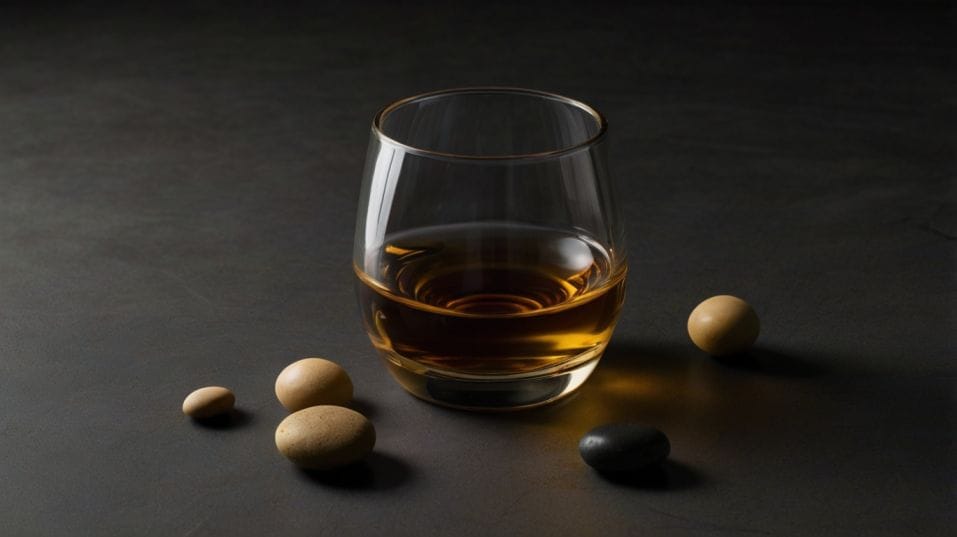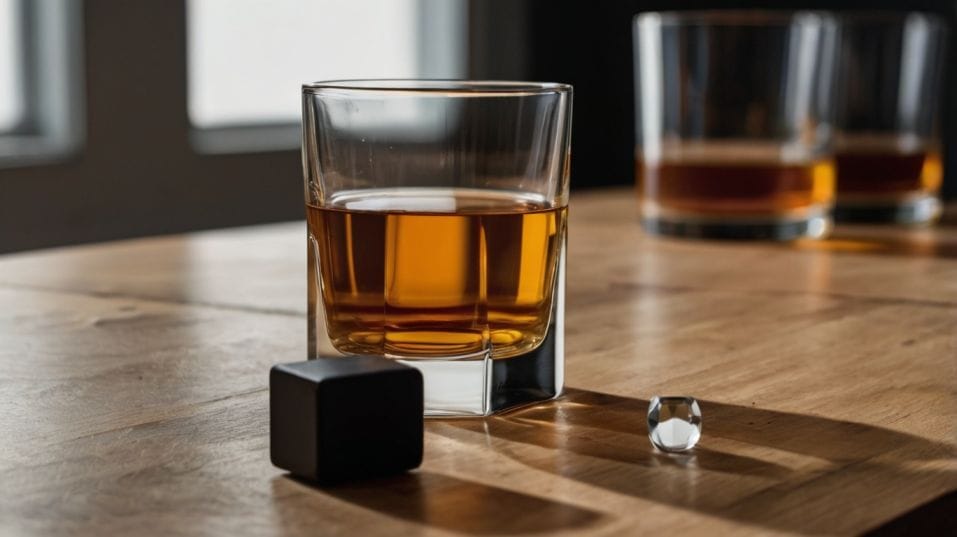The Difference Between Whiskey Stones and Ice
Learn when to use whiskey stones or ice to elevate your pour. Discover how each changes flavor, texture, and experience—sip with confidence.

What if the way you chill your whiskey is holding back the best part of the pour? For anyone just starting their whiskey journey, understanding how ice and whiskey stones affect flavor is a game changer.
These aren’t just cooling methods—they shape how your drink smells, tastes, and evolves. Whether you're chasing bold complexity or preserving delicate balance, the right choice starts in your glass. Let’s break it down.
What’s Actually Going On in Your Glass
Every time you pour a whiskey, it’s a snapshot of chemistry in motion. Alcohol content, volatile aromas, oil solubility, and barrel extraction all play a role in the flavor.
When you add ice, you're doing more than just cooling things down—you’re adjusting the structure of the whiskey itself.
The moment ice hits the spirit, two things happen: the temperature drops, and the ice starts to melt. That dilution lowers the ABV. And that’s not a bad thing.
Some of the most experienced tasters in the world add a few drops of water to high-proof whiskey to unlock hidden complexity.
As the ABV dips, previously masked notes—stone fruit, toasted spice, herbal edges—can rise to the surface. The aromas open up. Harsh ethanol steps back. A slow melt allows you to taste your way through an evolving landscape.

But there's a catch. If your ice is too small, poorly made, or the room too warm, that melt happens too fast. You're left with a watered-down shadow of what the whiskey was meant to be.
Flavor flattens. Texture thins. Finish fades. What could have been a dynamic experience becomes bland before you even reach the halfway mark.
That’s where whiskey stones offer a different kind of control. They’re dense, inert, and slow to warm.
Unlike ice, they chill your whiskey without adding a single molecule of water. For purists—or for bottles that need to be tasted as-is—they give you temperature moderation without chemical change.
But here’s the blunt truth: they don't chill like ice, and they don't evolve flavor like dilution can. They keep things steady. If you're hoping to “taste more” from your whiskey, stones won’t do much heavy lifting.
Why Ice Works—for the Right Whiskey
Let’s say you’re pouring a cask-strength bourbon or a young rye that drinks hot and sharp. That’s where ice earns its place.
A large, clear cube cools the pour gradually and allows the whiskey to stretch out over time. It slows the attack of alcohol, bringing balance to what would otherwise feel like a brawl on your palate.
Ice Reveals Range
But this isn’t just about tempering heat. Ice—when used intentionally—reveals range. You’ll notice flavors shift as the whiskey dilutes: oak steps back, fruit opens up, spice softens.
Suddenly, a whiskey you thought was all brawn shows surprising nuance. That’s not trickery. It’s design.
Distillers often craft their high-proof releases knowing that people will add water or ice. You’re not ruining it—you’re unlocking it. The key is to do it deliberately.
Keep your cubes large and clear if you want to control melt. Use one at a time. Avoid crushed ice or freezer-burned messes. And above all, pay attention to how your whiskey changes with each sip. That’s where real understanding begins.
Why Whiskey Stones Work—When the Whiskey Already Speaks for Itself
Whiskey stones aren’t about unlocking flavors. They’re about keeping the temperature in check without inviting change. That’s useful when you’re sipping a bottle that’s already perfectly balanced.
Stones Offer Restraint
A delicate Lowland single malt aged in wine casks? You don’t want to mute that floral nose or thin out its silky texture.
A dusty bottle of well-aged bourbon that’s spent two decades mellowing in oak? You want that exactly as it is—nothing added, nothing taken away.
In these cases, whiskey stones offer restraint. They cool without interference. You’ll get a softer, smoother sip, especially on warmer days, without worrying about losing structure or finish.
But stones aren’t all-purpose. They don’t stay cold forever. They need to be properly pre-chilled, ideally for hours. And they don’t drastically lower temperature—they just nudge it.
If you're expecting a chilled cocktail feel, you’ll be disappointed. What you’ll get is a whiskey that’s slightly cooler to the touch and more stable in the glass.
Know When to Use Each Tool
This isn’t about loyalty to one method. It’s about knowing your goals. Want to explore a whiskey’s potential?
Ice, in the right form, can guide you through a spectrum of flavor and aroma. Want to enjoy a whiskey exactly as it’s been bottled, but slightly cooler? That’s where whiskey stones serve best.
And don’t forget the third option: water. Just a few drops can provide the best of both worlds. You reduce proof with precision, soften alcohol impact, and trigger flavor release—without over-chilling or clouding the glass.
This is how seasoned tasters often work through a flight: neat, then with a few drops, then maybe with ice. Each step teaches something different.
Understanding how water, ice, or stones interact with the whiskey in your glass is a foundational technique for anyone looking to develop a real palate.
Final Thoughts
Good whiskey rewards attention. How you serve it should never be an afterthought. Ice changes whiskey. Stones preserve it. Water reveals it.
There’s no best answer—just better questions: What am I trying to experience from this pour? What will help me taste it more clearly? What will get in the way?
Next time you pour, don't just reach for whatever's closest. Make the choice that matches the moment. Try your whiskey three ways.
Notice the shifts. Build your own ritual. Own your experience. Taste with intent. That’s how you build a serious palate—one pour at a time.




